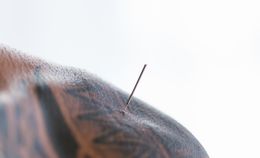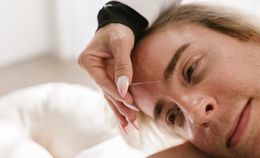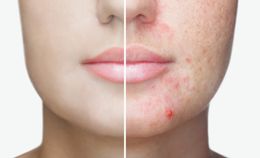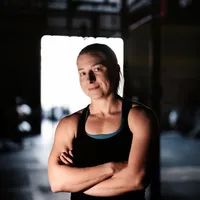Have you considered going to a craniosacral therapy session but would like to know about the benefits and side effects of the treatment? This guide will help you discover the answer to these questions and more.
What is Craniosacral Therapy?
Cranial sacral therapy (CST) also referred to as craniosacral therapy is a hands-on healing technique that relieves compression in the cerebrospinal fluid, bones of the head, sacrum and soft tissues that surround the central nervous system (CNS). The cerebrospinal fluid, soft tissues, and the skull make up the craniosacral system, and they support the CNS, which consist of the spine and brain.
CST is a non-invasive therapy that relieves pain and stress caused by compression through the application of pressure to the back, neck, and head. As a result, it is used to promote overall health and wellness.
Who Performs Craniosacral Therapy?
CST can be performed by chiropractors, osteopaths, physical therapists, and massage therapists. And depending on what you want to treat. You may need to schedule between 2 and 10 sessions and follow up with maintenance sessions. Your holistic health practitioner will determine what's right for your condition.
How does Craniosacral Therapy Work?
Craniosacral tissues can tighten due to conditions such as injury, tension, and stress. Either singly or in combination, these three put a strain on the CNS and disrupt normal body functions, including the flow of cerebrospinal fluid. To unclog blockages, craniosacral therapists use their hands to produce a touch of under 5 grams to release stress and tension from the craniosacral system, thus, relieving associated strain on the CNS.
Through gentle manipulation of the bones in the pelvis, spine, and skull, the flow of the cerebrospinal fluid which supports the CNS can be normalized. And with it comes the elimination of blockages which disrupt the normal flow, thus enhancing the body's ability to self-heal.
Benefits of Craniosacral Therapy
There are many benefits to craniosacral therapy. It may be used to reduce the number of symptoms related to various conditions, from chronic fatigue to headaches, anxiety to PTS. Below we go into detail on how you may benefit from craniosacral therapy.
Headache Effectiveness
Recent research published in the BMC Complementary and Alternative Medicine journal, which involves individuals with moderate to severe migraine recruited from the university community, family practices, and specialty clinics, shows the effectiveness of cranial work for headaches.
Those who met the criteria of a minimum of 5 migraines per month were randomized into two groups of 8 weekly CST or low-strength static magnet therapy (LSSM) treatments and a 4 weeks follow-up after the conclusion of the therapy.
This study specifically measured the headache frequency and headache-specific quality of life (HIT-6), and headache intensity.
Results show both groups benefited from the therapies; however, the values reported for headache intensity in the CST group were lower compared to the LSSM group - although the values were not statistically significant.
Anxiety and Depression
Another study explored the possibility of using craniosacral treatment to treat conditions such as anxiety and depression, neck and back pain, headaches and migraine, and unsettled babies using a Upledger Craniosacral Therapy (UCST).
This study utilized a sample size of 157 patients, ranging from newborn to 68 years of age. Out of this number, seventy-four percent recorded improvement in their presenting problem, while sixty-seven percent reported an increase in general wellbeing.
This study shows that Upledger Craniosacral Therapy is effective for patients suffering from migraine, headache, back and neck pain. However, it recommends further research into Upledger Craniosacral therapy as a treatment modality for the above problems.
Asthma
This study has explored the possibility of utilizing a synergistic combination of acupuncture and craniosacral therapy for improving pulmonary function and improving the quality of life of people suffering from asthma, while also reducing depression, anxiety, and medication usage.
The result of the study shows both the combination of CST and acupuncture was not superior to each therapy when applied alone. All participants who received treatment from one particular practitioner had more significant reductions in anxiety than others receiving both therapies from multiple practitioners.
The study concluded that CST and/or acupuncture are potentially useful in treating adults with asthma, but a synergistic combination of the two offers no additional benefit over each therapy alone.
Autism
Research reveals that Craniosacral Therapy can be used as a treatment option for symptoms associated with Autism Spectrum Disorder. Previous literature shows its clinical applications have been available for decades, but few empirical studies exist to support its effectiveness.
The result of this survey published in Elsevier study recommends CST as a treatment option, as all the sample group recorded positive responses to ASD after CST therapy. However, it suggests further investigation into the modalities of using CST for Autism Spectrum Disorders (ASD).
Cranial sacral therapy can be used by both the young and old to treat other conditions including:
-
Fibromyalgia
-
Disorders of the central nervous system
-
Grief
-
Scoliosis
-
Difficulty with coordination, movement or walking
-
Tension
-
Chronic fatigue
-
Brain and spinal injuries, including concussion or traumatic brain injury
Side Effects of Craniosacral Therapy
Craniosacral therapy is generally considered safe because the amount of pressure applied by your practitioner is low. And for this reason, CST can be used for young children and infants . However, people who are uncomfortable with any form of bodywork such as massage may experience the following:
-
Dizziness
-
Nausea
-
Lightheadedness
-
Seeing colors
-
Diarrhea
-
Dizziness
-
Healing crisis
-
Feeling sick
-
Nausea
What to Expect After Treatment?
After a craniosacral therapy session, it is advisable to drink lots of water. As a result of relieving tension and pain, your body may release toxins into your bloodstream. With water, you can flush them out.
You may experience feelings of relaxation, relief, or drowsiness. Practitioners advise staying away from physically exhausting activities for a day or two after a session. This translate to getting adequate rest, which will help your body adjust to any physiological changes in your system.
Additionally, you may experience the release of trapped emotions. Craniosacral therapists believe this is an excellent time to be patient with yourself. They advise you to gently bring up any feelings to your awareness and use it as an avenue to get more in touch with your body.
What to do if you Feel Worse After a Craniosacral Therapy
After a session, it is not uncommon to feel "spacey", "tired" or "generally worst". If this happens to you, it is wise to listen to your body and allow for some time to adjust to the changes.
Do not go for a run immediately after a session. If you notice general aches and pains with headaches or emotional imbalance, it is your body trying to rebalance after the therapy. Drink plenty of water and rest adequately.
Furthermore, if you experience flushing or nausea, which are signs of hypersensitivity during or after treatment, pause your sessions for a while to allow your body to calm down. If it doesn't, discontinue therapy until your body rebalances. These symptoms do not last long generally, and you will feel better in no time. Again, drink plenty of water and get adequate rest.
Is Crying Normal After Treatment?
Crying and other emotional releases such as laughter, anger, frustration, fear, and expression of muscle spasm is normal during craniosacral therapy until emotional stress is cleared from the body.
The emotional release process is called SomatoEmotional Release (SER) - it is an expansion of the principles of craniosacral therapy which help to rid the body and mind of the residual effects of trauma.
SER encompasses body dialoguing, inner child work and can trigger crying, laughter or anger. The emotional response to SER is different in each individual, and it is a way to reconnect with the body, mind, and spirit.
Other Dangers of Craniosacral Therapy
Another commonly reported side effect of cranial sacral therapy is mild discomfort after sessions. This often subsides within 24 hours. However, certain individuals should not use cranial sacral therapy. These include people who are suffering from:
-
Diagnosed aneurysm
-
Severe bleeding disorders
-
People who have a recent history of head injuries, which include skull fractures or cranial bleeding.
References
Haller H, Lauche R, Cramer H, Rampp T, Saha FJ, Ostermann T, Dobos G. (2016). Craniosacral Therapy for the Treatment of Chronic Neck Pain: A Randomized Sham-controlled Trial. Clinical Journal of Pain, 32(5):441-9. doi: 10.1097/AJP.0000000000000290. Retrieved April 23, 2019, from https://www.ncbi.nlm.nih.gov/pubmed/26340656
Harrison RE, Page J.S. (2011). Multipractitioner Upledger CranioSacral Therapy: descriptive outcome study 2007-2008. Journal of Alternative Complementary Medicine, 17(1):13-7. doi: 10.1089/acm.2009.0644. Retrieved April 23, 2019, from https://www.ncbi.nlm.nih.gov/pubmed/21214395
Kratz SV, Kerr J, Porter L. J Bodyw Mov Ther. (2017). The use of CranioSacral therapy for Autism Spectrum Disorders: Benefits from the viewpoints of parents, clients, and therapists, 21(1):19-29. doi: 10.1016/j.jbmt.2016.06.006. Retrieved April 23, 2019 from https://www.ncbi.nlm.nih.gov/pubmed/28167177
Mann, J., Gaylord, S., Faurot, K., Suchindran, C., Coeytaux, R., Wilkinson, L., ... Curtis, P. (2012). P02.55. Craniosacral therapy for migraine: a feasibility study. BMC Complementary and Alternative Medicine, 12(Suppl 1), P111. doi:10.1186/1472-6882-12-S1-P111. Retrieved April 23, 2019, from https://www.ncbi.nlm.nih.gov/pmc/articles/PMC3373391/
Mataran-Penarrocha, G. A., Castro-Sanchez, A. M., Garcia, G. C., Moreno-Lorenzo, C., Carreno, T. P., & Zafra, M. D. (2011). Influence of craniosacral therapy on anxiety, depression and quality of life in patients with fibromyalgia. Evidence-based complementary and alternative medicine: eCAM, 2011, 178769. doi:10.1093/ecam/nep125. Retrieved April 23, 2019, from https://www.ncbi.nlm.nih.gov/pubmed/19729492
Mehl-Madrona L, Kligler B, Silverman S, Lynton H. (2007). The impact of acupuncture and craniosacral therapy interventions on clinical outcomes in adults with asthma. Merrell W. Explore (NY), 3(1):28-36. DOI: 10.1016/j.explore.2006.10.003. Retrieved April 23, 2019, from https://www.ncbi.nlm.nih.gov/pubmed/17234566
Powell, W., 2nd, & Knaap, S. F. (2015). Cranial Treatment and Spinal Manipulation for a Patient with Low Back Pain: A Case Study. Journal of chiropractic medicine, 14(1), 57-61. doi: 10.1016/j.jcm.2014.12.001. Retrieved April 23, 2019, from https://europepmc.org/abstract/med/26644786
Wetzler, G., Roland, M., Fryer-Dietz, S., & Dettmann-Ahern, D. (2017). CranioSacral Therapy and Visceral Manipulation: A New Treatment Intervention for Concussion Recovery. Medical acupuncture, 29(4), 239-248. doi:10.1089/acu.2017.1222. Retrieved April 23, 2019, from https://www.ncbi.nlm.nih.gov/pubmed/28874926





















